Gibraltar Monkeys
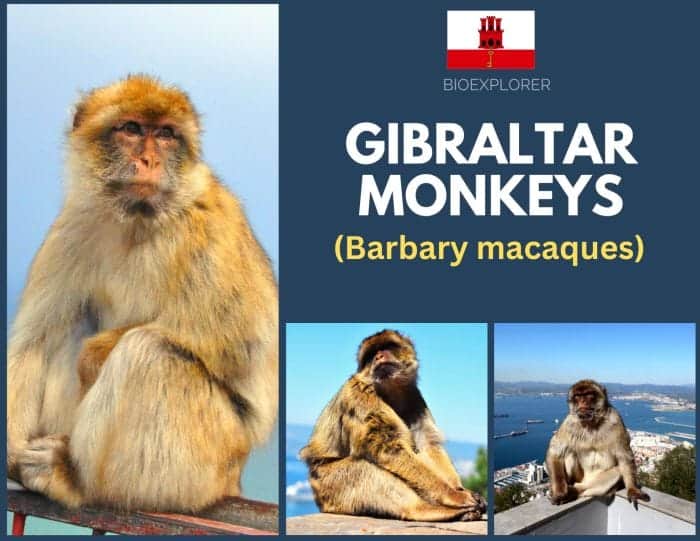
The Barbary macaque is a fascinating species of monkey found across parts of North Africa and Gibraltar. Also known as Barbary apes or rock apes, these clever primates have made the rocky, forested terrain of Gibraltar their home for over 300 years, delighting locals and travelers alike with their antics.
The macaques are Europe’s only free-roaming primate species and are considered by many to be relative newcomers to Gibraltar. But they have staked their place as veritable mascots for the British overseas territory and enduring symbols of Gibraltar. Their status even carries the local legend that as long as Barbary Macaques populate Gibraltar, they will remain under British rule.
Jump to:
- Gibraltar Monkeys: Iconic Celebrities
- The History & Origin of Gibraltar's Monkeys
- Wartime Decline and Churchill's Efforts to Save the Monkeys
- Gibraltar Monkey Ecology, Behavior, and Social Structure
- Gibraltar Monkey Conservation Status and Management
- Visiting the Famous Gibraltar Monkeys
- Fun Facts and Symbolism of Gibraltar's Barbary Macaques
- The Future for Gibraltar's Barbary Macaques & Conservation Efforts
- Conclusion
Gibraltar Monkeys: Iconic Celebrities
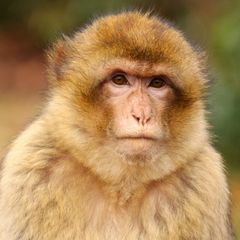
It’s not hard to see why the engaging, mischievous monkeys have earned celebrity status in Gibraltar. From the vantage point of the Upper Rock Nature Reserve, which houses most Barbary troop territories, visitors can often spot them chasing, grooming, resting, and vocalizing as they interact with fellow macaques.
Barbary macaques showcase advanced social dynamics for cooperative living, including a structured matrilineal hierarchy headed by the alpha female, collective infant rearing, and conflict resolution. This serves them as an extraordinarily successful species that has adapted well from the Atlas Mountains and Rif Regions of Morocco and Algeria to the unique habitat of the Rock of Gibraltar.
There is something about coming face-to-face with these Gibraltar icons that feels like a travel back in time to more primal origins where humankind and primates have yet to diverge clearly. It sparks something profoundly human-like in their earthy nature and uncanny familiarity.
There’s never a dull moment among Gibraltar’s macaques, whether its juvenile monkeys frolicking together or cheeky adults trying to steal food, hats, cameras, and anything else they can get their hands on from amused tourists. Every encounter offers a new experience and perspective on our connection to the fascinating, unruly residents that lend Gibraltar so much charm and character.
This comprehensive guide to Gibraltar’s famed Barbary macaques will explore everything you need to know about their history, ecology, behavior, interactions with humans, conservation status, top spots to see them, and what the future may hold for these endemic primates of the Rock.
The History & Origin of Gibraltar’s Monkeys
The introduction of Barbary macaques to Gibraltar happened relatively recently, but theories abound regarding exactly how and when the monkeys first arrived.
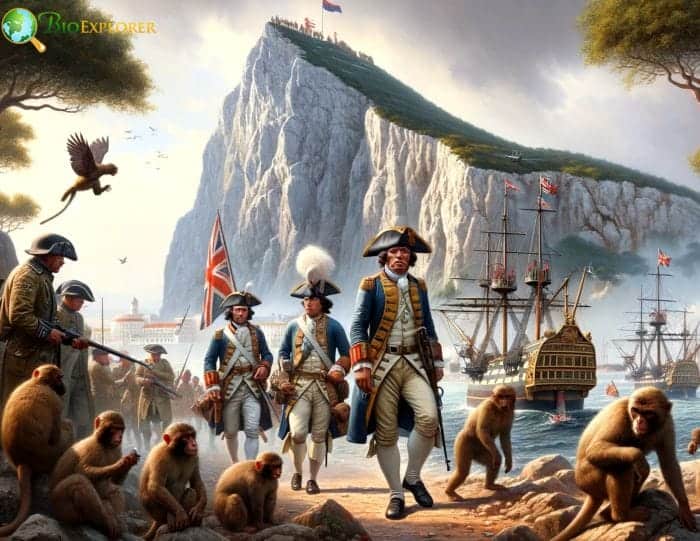
- Most accounts trace their origin to the nature of Gibraltar as a strategic military outpost occupied over the centuries by multiple Mediterranean civilizations.
- The prevalent legend credits the arrival of Gibraltar’s first Barbary macaques to the early 18th century. As the story goes, during the War of Spanish Succession in 1704, the Rock of Gibraltar was captured by Anglo-Dutch forces. The troops were led by British Admiral Sir George Rooke, who later became Gibraltar’s governor, and Dutch Admiral George van Kattendijke.
- Aiding them was the Genoese-Italian explorer Martin de Hoyos, who had English connections. De Hoyos had extensive knowledge of the North African Barbary Coast from his exploration and linguistics studies. Some historical accounts state he personally introduced the original troop of Barbary macaques to Gibraltar likely as exotic oddities befitting the eclectic settlement history there.
Other theories suggest the Barbary macaques arrived right after 1704, brought over as pets by some English and Dutch occupiers of the Rock of Gibraltar.
- Regardless of the exact origin details, most evidence points to Gibraltar’s monkeys being introduced in 1704 by Admiral Rooke and his men shortly after capturing Gibraltar and wanting to celebrate with an exotic touch.
- Initially, the monkeys were likely confined to the cliffs lining Gibraltar’s Great Siege Tunnels. Eventually, they dispersed more widely across the Upper Rock Nature Reserve, lending Gibraltar a unique primate heritage still iconic today. The macaques adapted readily to the terrain and protection Gibraltar afforded to flourish for over 300 years.
- The occupiers of Gibraltar over the centuries, from Neolithic humans to Phoenician traders, Visigothic invaders, Moorish armies, and the modern British garrison, have come and gone.
But through all that tumultuous history, Gibraltar’s free-roaming Barbary macaques have remained thriving fixtures with an aura as timeless as the Rock itself.
Wartime Decline and Churchill’s Efforts to Save the Monkeys
During World War II, Gibraltar was again an actively contested point owing to its tactical position. Supplies to Gibraltar were severely disrupted over years of war with the Axis powers. Food rationing for soldiers and civilians alike grew dire.
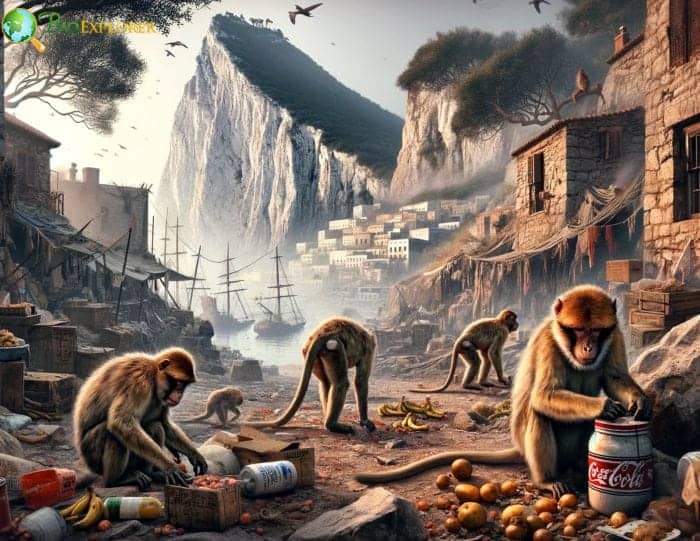
- This profoundly impacted Gibraltar’s Barbary macaques, which were used to natural forage across the Upper Rock Nature Reserve or food scraps from the local population. Their numbers declined precipitously from over 500 monkeys before the war to fewer than 100 by 1945 as malnutrition ravaged them.
- When word reached England that Gibraltar’s famous macaques teetered on extinction from starvation, even the Queen herself grew alarmed about the fate of the Rock’s iconic monkeys. As one historical account tells, the Queen remarked in a letter to Sir Winston Churchill, then Prime Minister overseeing the war effort:
“They say that if these apes ever leave the Rock, the British will lose Gibraltar. I, therefore, ask You to take special care of these animals. I think this needs action.”
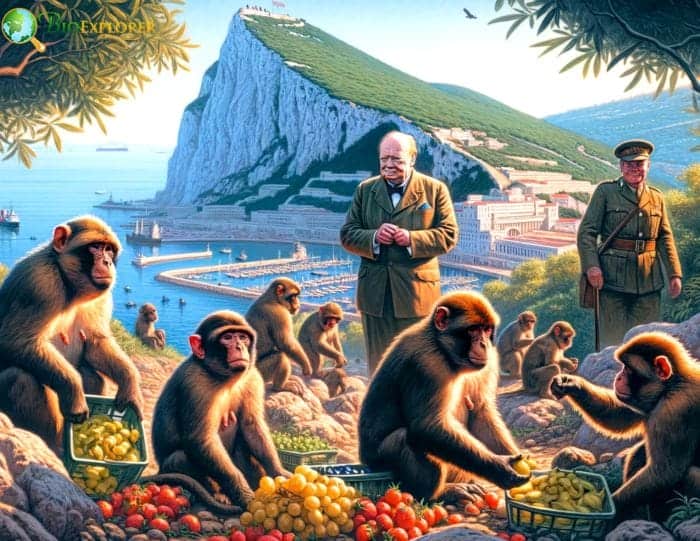
- Always known for legendary flourishes and dramatics, Winston Churchill reportedly took heed of the Queen’s symbolic assessment that the monkeys represented the British foothold in Gibraltar.
- He swiftly ordered emergency provisions enacted to feed and restore Gibraltar’s macaques as a sign of Britain’s reigning control despite the hardships of war.
- Reputedly the British leader himself helped reinstate fruit rations for the besieged monkeys. The macaque population slowly recovered once wartime passed, thanks to these conservation efforts.
Today, they rebounded to a stable level of some 230-240 monkeys as a protected species.
So, the Barbary macaques have Winston Churchill and British loyalty to thank for persevering through World War II’s privations. The monkeys held profound symbolic meaning tied to the fate of British Gibraltar.
Today they continue delighting all who visit them, representing Gibraltar’s rich heritage and resilience against the odds.
Gibraltar Monkey Ecology, Behavior, and Social Structure
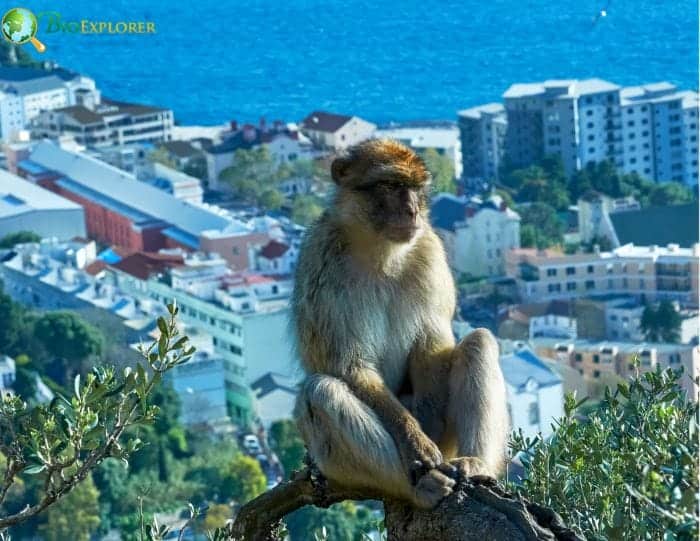
Gibraltar’s Barbary macaques showcase a complex and orderly social structure similar to most primates. They live in organized troops of related females and offspring headed by a dominant alpha matriarch who guides group decisions. The average troop size is around 20-30 monkeys who share territories. Mixed groups will form of up to 85 macaques at prime food sources.
- Leadership & Hierarchy: Troops have a hierarchical order reflected in resource access. The alpha female exerts the most dominance, followed by her close female kin. Adult daughters inherit rank with males ranking lowest, even fathers over sons. But monkey studies show that even low-ranking members gain acceptance through affiliation and bonding behaviors that uphold group unity.
- Diet & Feeding: On their native range across coastal North Africa, Barbary macaques spend 70-95% of their daytime foraging. In Gibraltar’s habitat, they still retain these active foraging behaviors. Their diet includes fruit, nuts, seeds, flowers, tree parts, small birds or reptiles, and terrestrial creatures. They also acquire “monkey nuts” or seeds and fruit snacks from tourists now that wildlife interactions have become commonplace.
- Social Roles: Along with leaders who guide activities, there are other group “job” assignments typical of primate troops. Young adolescents often become “aunties” who care cooperatively for the group’s infants, learning and affirming bonding behaviors along the way. Other monkeys specialize as sentinels scanning for threats from elevated perches or as tool users manipulating stones to access hard-shelled nuts or insects.
- Gender Differences: Males and females occupy distinct roles in macaque society. Females remain with their birth group their whole lives, reinforcing strong maternal bloodlines and reaffirming group expectations. Males eventually leave their natal groups between ages 4-8. They may float solo or join established male cohorts allied with a home troop but not necessarily genetically related to them. Females rule troop activities while males handle threats or disturbances from outside groups.
- Reproduction: Females mature at 4 years, with the first estrous around 18 months. They bear single infants after a 170-day gestation with births highly seasonal based on ample spring food sources. Infant rearing is a collective effort by the whole troop with contributing members all gaining parental experience and life skills in caring for youngsters.
The elaborate social world of Gibraltar’s Barbary macaques underlines how complex their interrelationships are compared to solitary primates.
From conflict resolution to networking contacts beyond the home group, synergistic monkey interactions are key to their social learning and flexibility to find niches across wilderness habitats and even in human settlements like the Rock of Gibraltar.

Gibraltar Monkey Conservation Status and Management
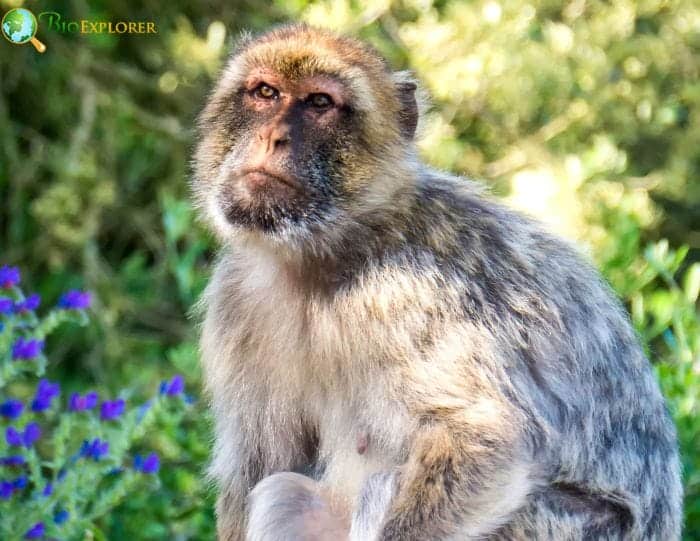
Gibraltar’s Barbary macaques represent the only wild monkey population on the European continent. But beyond being a quirky novelty, they serve important symbolic, cultural, and conservation roles for the species and Gibraltar itself.
As such, the local Gibraltar government, environmental agencies, wildlife researchers, and tourism outfits all share a vested interest in protecting the monkeys. Their combined efforts help ensure the monkeys survive and thrive as a sustainable attraction.
- Population Control: With few natural predators in Gibraltar and bans on hunting the monkeys, authorities must conduct periodic culls and sterilizations manages the population. About 4-6 macaques monthly are humanely euthanized to stabilize numbers around 230-240 monkeys supported on the peninsula.
- Feeding Guidelines: Supplemental feeding by tourists and locals alike once caused serious health issues for the macaques from over-dependence. Now strict mandates limit giving the monkeys processed snacks in favor of natural forage while hiking the Upper Reserve trails where they dwell. This bolsters self-sufficient monkey behaviors.
- Safety Initiatives: Education campaigns teach visitors to observe the monkeys respectfully from a distance. Signs advise not to crowd monkeys or cut off their escape paths. Fines up to £500 and even imprisonment can result from wildlife harassment offenses. Such policies protect human and monkey welfare alike.
- Vaccinations & Vet Care: Gibraltar’s macaques enjoy extensive health monitoring under government programs. Infant and adult monkeys undergo regular health checks and treatment protocols that allow for useful data collection to aid conservation aims for the species.
Thanks to such proactive management policies and public cooperation with them, Gibraltar offers a thriving sanctuary where Barbary macaques are valued and safeguarded for generations to come. The monkeys delight all who come to see them against the stunning backdrop of the Rock.
Visiting the Famous Gibraltar Monkeys
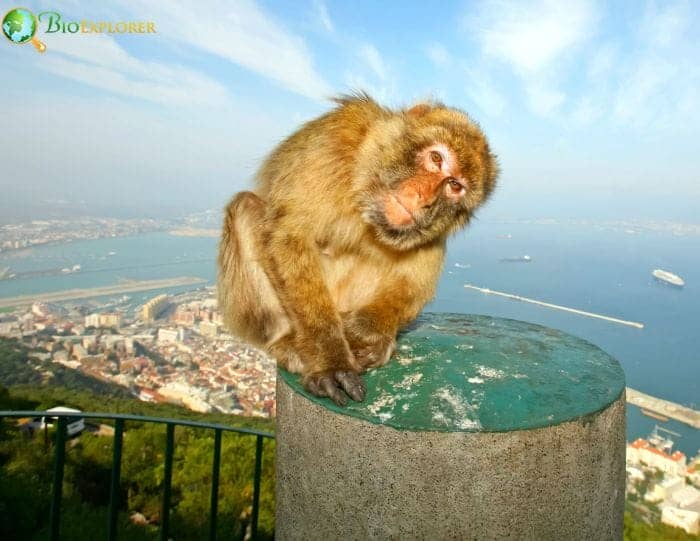
Gibraltar’s world-famous Barbary macaques offer endless entertainment for visitors able to admire them across various vantage points. The best access comes via the Upper Rock Nature Reserve where most monkey troops have carved out territories benefiting from the protected status.
- Prime Viewpoints: The Reserve offers miles of scenic trails and lookouts where macaques congregate, like Apes’ Den, Queen’s Gate, Goat’s Hair Twin Caves, and the Top of the Rock. Barbary Road near the national park entrance is also a hotspot. Sit a while and enjoy the monkeys’ humorous antics.
- Photography Tips: Using telephoto lenses is best for capturing the monkeys’ natural behaviors without invasive approaches causing stress. Never use flash or camera noise near infants or sleeping monkeys. Always give them right-of-way on trails and respect their safe zones. The gibraltarinfo. gi website has responsible photography guidelines worth reviewing.
- Food Rules: Direct feeding Gibraltar’s monkeys or encouraging begging behaviors undermining their self-foraging skills and fitness is now illegal. But you may see them snatch unattended food or raid rubbish bins. Secure all items when sightseeing near them and notify authorities if any monkey seems injured or in distress.
- Safety Precautions: Macaques see bags, water bottles, or even hats as tempting “toy” objects to snatch. Keep a firm grip on all personal items when walking near them. Though harmless, monkey bites can happen if they feel startled or crowded. Always keep your distance and retreat slowly if they approach too closely. Parents should monitor children carefully around the monkeys.
The Gibraltar monkeys offer endless amusement for those visiting them. Seeing them roam wild showcases their natural behaviors and bonds missing in standard zoo exhibits. Respect them from a slight distance and let their playful antics speak for themselves. The macaques never disappoint when given the courtesy and habitat to be monkeys.
Fun Facts and Symbolism of Gibraltar’s Barbary Macaques
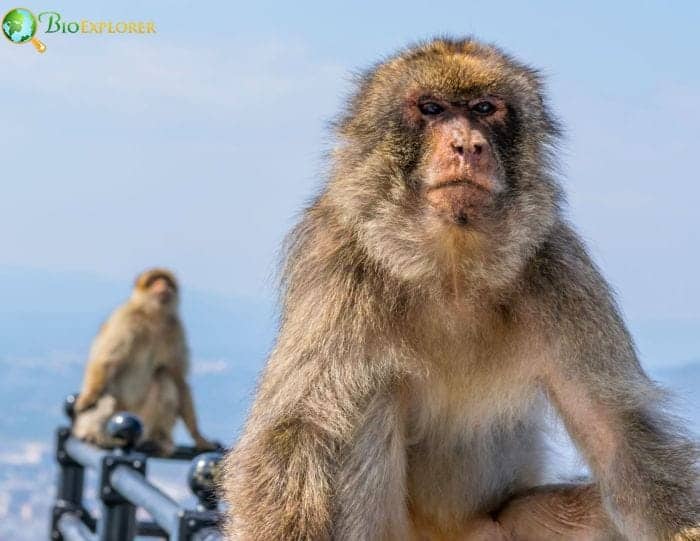
Beyond the deeply engrained social structure of Barbary society, Gibraltar’s iconic macaques showcase plenty of amusing quirks and traits for visitors to spot:
- Distinctive Features: Many individual monkeys have recognizable features useful to identify them, such as Missing limbs or digits, Scars from fights over hierarchy and mates, Distinctive faces with colorful skin and expressions and Varied fur colorations including light or dark tones.
- Cherished Infants: Baby macaques elicit excited attention from whole troops who rush to see newborns. Mothers carefully guard them initially but let others assist with grooming, feeding, transporting, and “babysitting” infants as they grow.
- Swimming Stars: Unlike most primates, barbary macaques are strong swimmers. Gibraltar troops go down the Rock cliffs to splash and play in the Mediterranean Sea during hot seasons. Their aquatic talent likely evolved due to the proximity of their native habitat across the Strait of Gibraltar to swimming areas.
- Mythic Symbol: Local legend claims Gibraltar will remain under British rule as long as its famous Barbary macaques remain on the Rock. This connects to old beliefs that the site becomes vulnerable to foreign domination when the macaques die out here. Hence why, Brits still safeguard “their” emblematic monkeys!
- Tourist Treasures: The engaging monkeys have been tourist favorites in Gibraltar for over a century. Historical photos show visitors feeding them as early as the 1940s. Tour promoters and souvenir shops still trade on Gibraltar’s fame for the photogenic, charismatic macaques that generate major tourism appeal.
The Barbary monkeys hold a special place in Gibraltar’s identity and ecology bolstered by all the history, folklore, and now protection initiatives that champion these amazing primates. They solidify Gibraltar’s reputation as the perfect interface between the wilds of nature and human civilization.
The Future for Gibraltar’s Barbary Macaques & Conservation Efforts
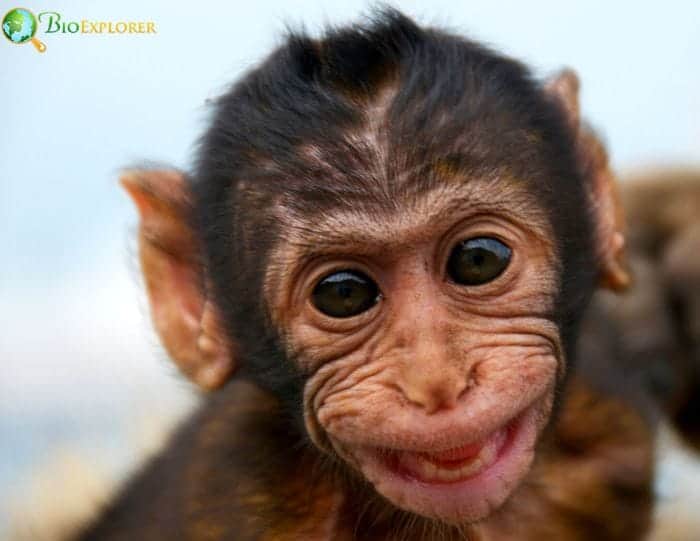
Gibraltar is one of the last protected bastions allowing wild Barbary macaques to roam freely. Across the Strait of Gibraltar, habitat loss and poaching have decimated related macaque populations in Morocco and Algeria. Classified as endangered, only some 8,000-10,000 now remain scattered across their ancestral range.
That underscores the immense importance of Gibraltar’s monkeys as an insurance population preserving 99% of the species’ genetic diversity alone. All current Barbary macaques trace ancestry back to Gibraltar’s stable, healthy troops. Without them, these engaging primates could blink out entirely.
- Priority Species: Recognizing their significance, Barbary macaques are now rated top-priority conservation species under various wildlife protection statutes across Europe and Morocco. Groups like the Barbary Macaque Awareness & Conservation organization champion field studies and breeding initiatives to prevent the distinct subspecies from going extinct.
- Local Conservation: Within Gibraltar itself, the Gibraltar Ornithological & Natural History (GONHS) society plays a lead role in preserving habitat, monitoring Barbary macaque health, and educating the public through websites, social media, tourist materials, and community events. Their initiatives enhance local appreciation for protecting Gibraltar’s endemic monkeys.
- In Situ Protection: Ongoing habitat protections, population limits, ecotourism guidelines, public education drives, and veterinary resources promote sustainable in situ preservation of Barbary society and DNA legacies. Tried-and-true management policies avoid risky experimentation that could jeopardize Gibraltar’s macaques.
- Global Cooperation: To augment small, fragmented wild groups in Morocco, international cooperatives like the EEP (European Endangered Species Program) oversee and manage the breeding of Barbary macaques in various zoos and reserves. This maintains helpful backup stocks of Gibraltar genes if needed for future infusions. Such methods safeguard overall species resilience.
Thanks to Gibraltar’s robust macaque sanctuary, the outlook remains cautiously bright for Barbary survival both here and abroad through joint conservation initiatives. And the monkeys continue to thrive, bringing joy and meaning to all who connect with them in their wild domain.
Conclusion
Gibraltar’s Barbary macaques have delighted residents and visitors for over 300 years with their clownish antics and similarities to human behaviors. These clever primates have adapted readily from their native North African habitats to become icons uniquely representing the Rock of Gibraltar worldwide.
Though small in number, their stable wild troops serve a crucial role in preserving invaluable biodiversity now at risk across Europe and Morocco.
Thanks to rigorous conservation initiatives and public dedication to safeguarding monkey welfare, Gibraltar’s macaques continue to thrive as one of many wonders, drawing explorers to this diverse wildlife sanctuary and historically rich gateway between continents. The future remains hopeful that these iconic Barbary apes will persist as beloved symbols of Gibraltar for centuries.
